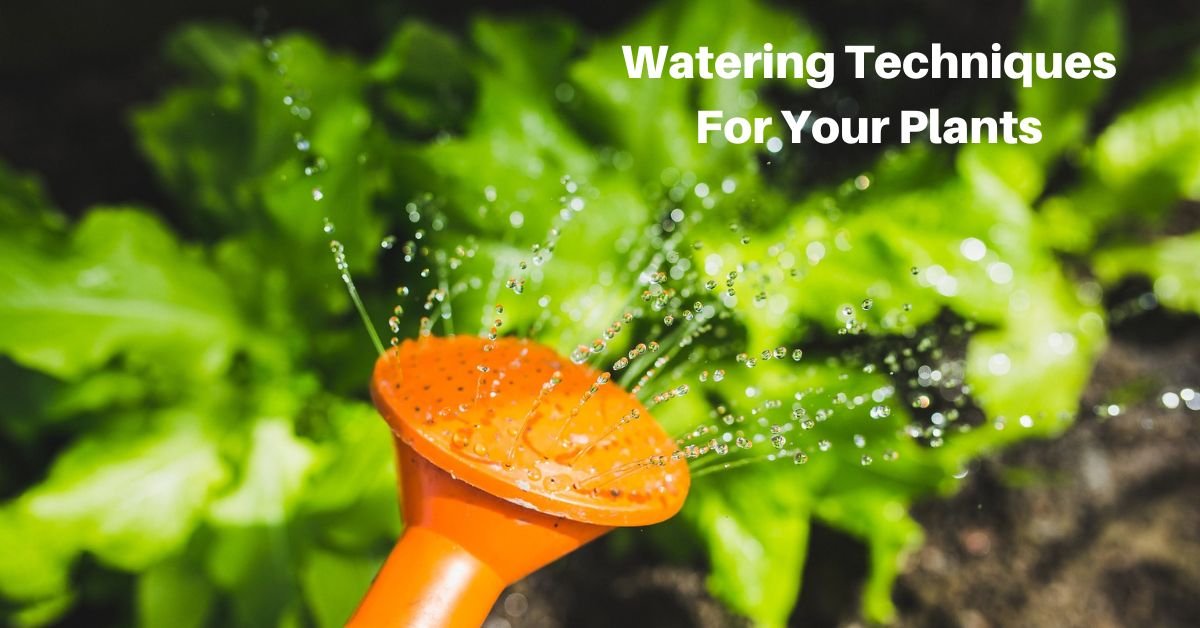Watering is a basic aspect of gardening that you can’t avoid unless you have absolutely perfect weather—which doesn’t exist in reality. Proper watering is pivotal to every plant’s health and vitality.
However, not all plants are created equal in terms of their hydration needs. From succulents that need a minimum of H2O to moisture-craving tropicals, you’ll need to understand each plant’s unique requirements to become a successful gardener.
This article delves into diverse ways to water plants, offering insights and techniques to ensure your garden thrives. We’ll examine both indoor and outdoor plants to (hopefully) provide you with a one-stop article that covers all your needs!
Understanding Plant Water Requirements
Plants’ water needs are influenced by a myriad of factors, including their native habitats, soil composition, and surrounding climate—which can require variations throughout the year!
Succulents, for instance, have adapted to survive with minimal water, storing moisture in their leaves. At the same time, plants native to tropical regions may require daily hydration to mimic their natural environment.
Overwatering and underwatering can both cause plant health problems. It’s remarkably easy to overwater, and it’s one of the most common issues in gardening. Overwatering can cause root rot and fungal diseases. Underwatering can lead to wilting, stunted growth, and even death if not corrected. Recognizing the signs of both is essential for maintaining plant health.
Basic Watering Techniques
Different plants require different amounts of water and may also prefer it to be delivered in specific ways. Here are some basic techniques:
- Top Watering is the most common method. Water is poured over the top of the soil using a watering can or hose. It’s suitable for most plants but requires careful attention to avoid overwatering.
- Bottom Watering is ideal for houseplants. It involves placing the plant in a water tray and allowing the soil to absorb moisture from the bottom up. It encourages deep root growth and prevents the soil from becoming compacted.
- Soaking is an excellent option for deeply rooted outdoor plants. A slow, deep soak ensures water reaches the root zone, promoting healthier growth. You can do this with a soaker hose or by leaving the hose running at a slow drip near the plant base.
- Misting: works best for certain tropical plants, like ferns and orchids. These benefit from regular misting to increase humidity around their leaves, mimicking their native environment.
Watering Techniques for Houseplants
Houseplants come from various climates and have adapted to different watering regimes. Here are some guidelines:
Succulents and Cacti
Allow the soil to dry out completely between waterings. When watering, soak the soil thoroughly until water drains out of the bottom of the pot. Err on the side of too little rather than too much because it’s extremely easy to overwater these plants that thrive in arid environments.
Tropical Plants
Tropicals often require consistently moist (but not waterlogged) soil. Watering once the top inch of soil feels dry usually works well. They may also benefit from increased humidity, which you can provide through misting or a humidity tray.
Watering Techniques for Outdoor Plants
When it comes to outdoor gardening, efficient water use and understanding the specific needs of each plant type are vital to fostering a thriving garden. Here’s how to approach watering for different outdoor plants:
Vegetable Gardens
Vegetables generally require consistent moisture to produce well. Implement drip irrigation or soaker hoses for deep, targeted watering that reaches the root zone without wasting water through evaporation. Watering in the early morning ensures plants have sufficient moisture throughout the day.
Ornamental Gardens
For ornamental plants, including perennials and annuals, assess each plant’s specific needs. Some may thrive on less frequent, deep watering sessions, while others may prefer more regular moisture. Mulching around plants can help retain soil moisture and reduce the need for frequent watering.
Lawns
Overwatering is a common issue with lawns, leading to shallow root systems and increased susceptibility to drought stress. Water deeply but infrequently to encourage deeper root growth, ideally early in the morning, to minimize evaporation and fungal diseases.
Advanced Watering Tips
Beyond the basics, fine-tuning your watering practices according to changing weather conditions, seasons, and plant growth stages can significantly enhance your garden’s health and productivity:
Adjusting to Weather Conditions
Reduce watering in rainy periods and increase during hot, dry spells. Always check soil moisture before watering to avoid unnecessary water use.
Seasonal Adjustments
Be mindful of your plant’s life cycle stages. Newly planted seeds and seedlings may require gentle, frequent watering, while established plants may benefit from less frequent, deeper watering sessions.
Mulching
Applying a layer of organic mulch around your plants helps conserve soil moisture and moderate soil temperature, reducing plant stress and limiting water evaporation.
Mastering the art of watering is a cornerstone of successful gardening. It requires observation, adaptation, and a deep understanding of each plant’s unique needs. By employing the proper watering techniques for your houseplants and outdoor plants, you can ensure optimal growth, vibrant blooms, and bountiful harvests. Remember, the goal is not just to give water to your plants; you have to appropriately hydrate them in a way that supports their overall health and vitality.









